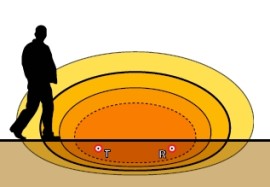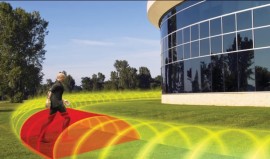INTREPID™ MicroTrack II
Buried cable intrusion detection system
INTREPIDTM MicroTrackTM II is the new-generation of Southwest Microwave's field-proven buried cable intrusion detection system for applications where covert perimeter protection is essential. It is a volumetric, terrainfollowing sensor that reliably detects and precisely locates walking, running or crawling intruders along a facility's perimeter. MicroTrackTM II incorporates enhanced digital signal processing for even higher detection performance in challenging site conditions.

Description
With a coverage range of 400 meters (1312 ft) per processor, the system consists of a MicroTrackTM II processor unit and two sensor cable pairs that may be buried along a facility's perimeter in soil, asphalt or concrete. A detection field is created around the sensor cable pair, enabling the detection of intrusions.
MicroTrackTM II is the industry's highest performing buried cable sensor, designed to fully adapt to its installed environment, setting new standards for performance by providing covert, terrain-following detection that is uniform along a site's perimeter. It pinpoints the location of perimeter disturbances using a target's spatial and time signatures to discriminate legitimate intrusions from harmless disturbances caused by small animals or environmental factors such as wind, rain or snow. The system's high signal-to-noise ratio and precise target location produce superior probability of detection and a very low false/nuisance alarm rate (FAR/NAR).
With MicroTrackTM II, detection zones are set in software, to cost-effectively tailor zoning to suit a site's unique requirements.
As part of the new-generation INTREPIDTM family, MicroTrackTM II networks seamlessly with the MicroPointTM II and MicroNetTM II Fence Detection Systems and MicroWave 330 Digital Microwave Link, using a common, open-architecture communications protocol.
Key features
- Single platform networking capabilities
- Intrusion location to 3 m (10 ft)
- Advanced digital signal processing (DSP)
- Terrain following capability
- Site-adaptive sensitivity levelingTM
- Software-controlled zoning
- Uniform detection along coverage area
- Four system controller options plus available sdk






